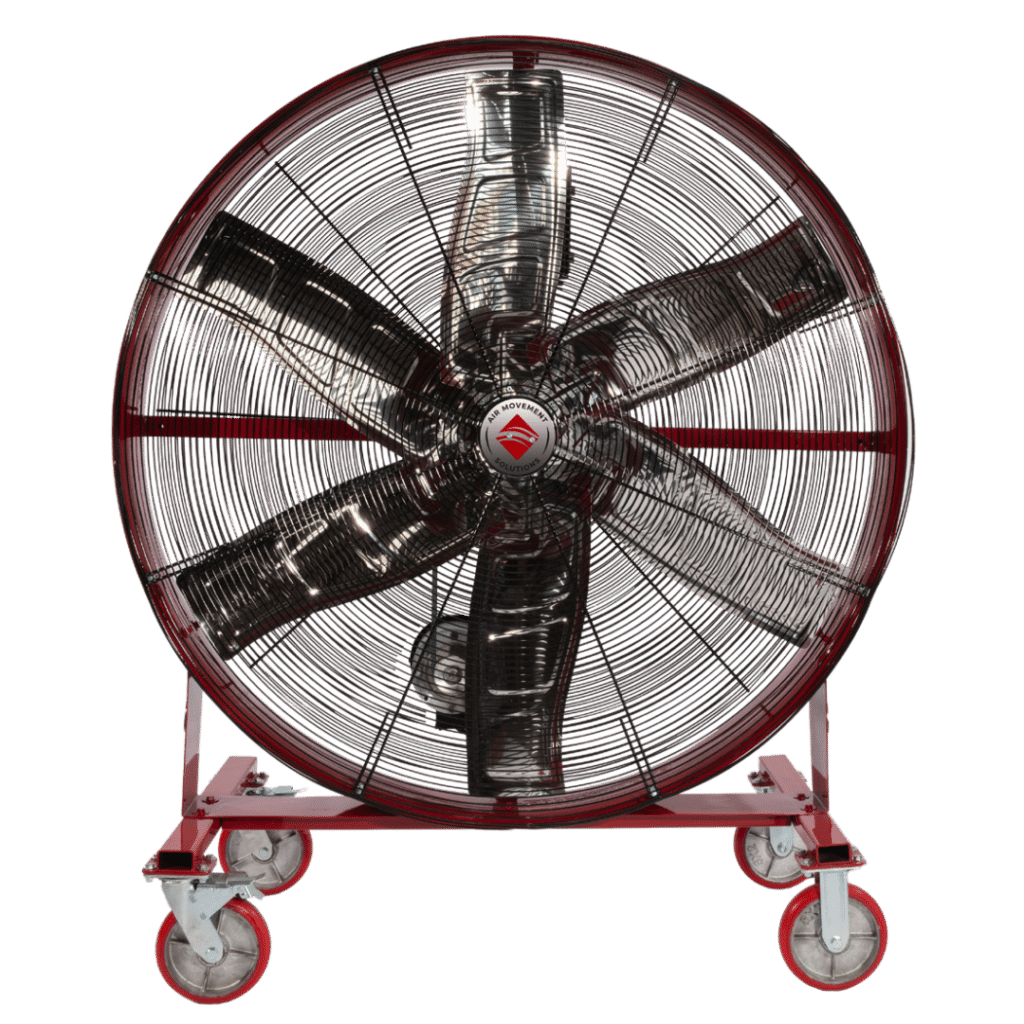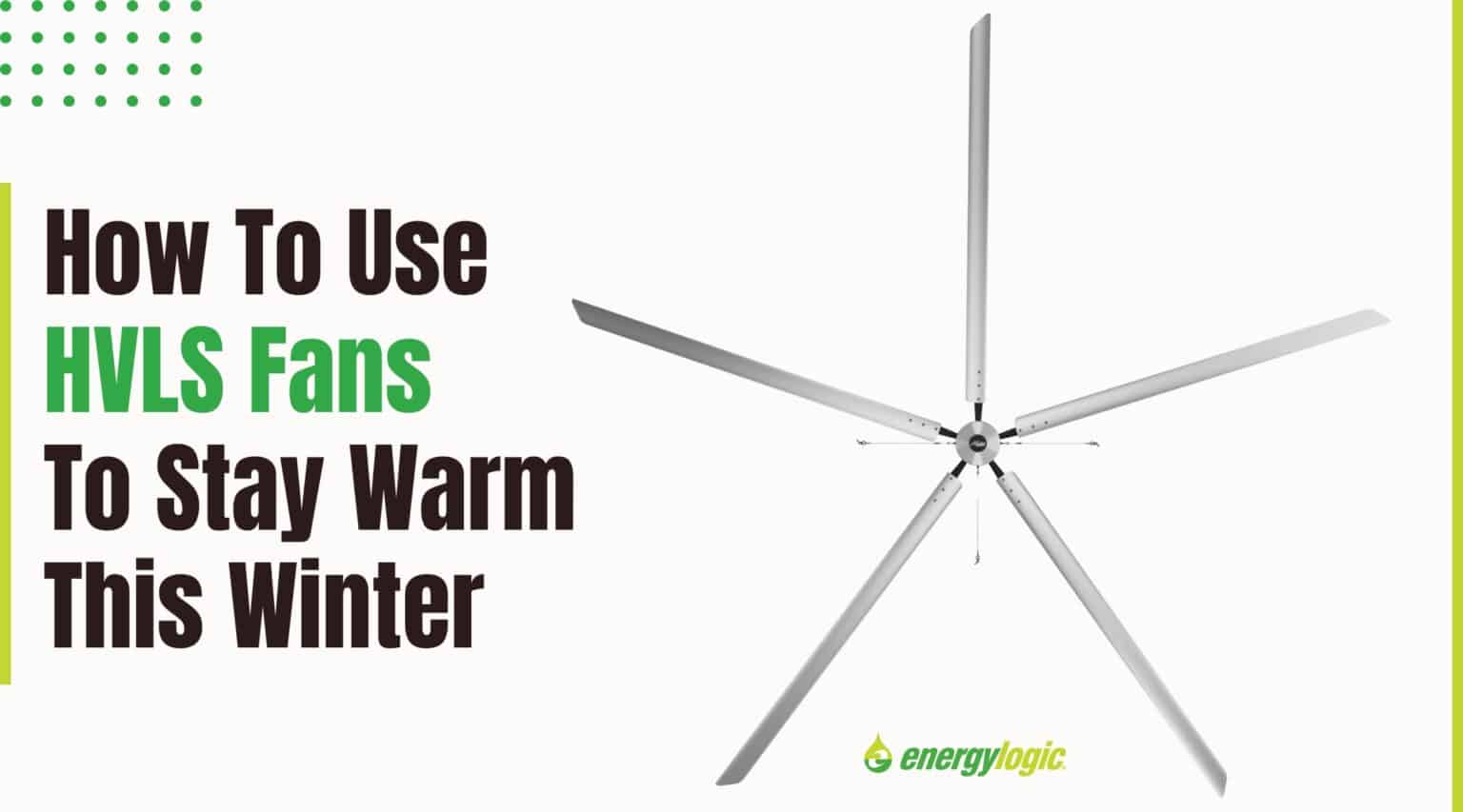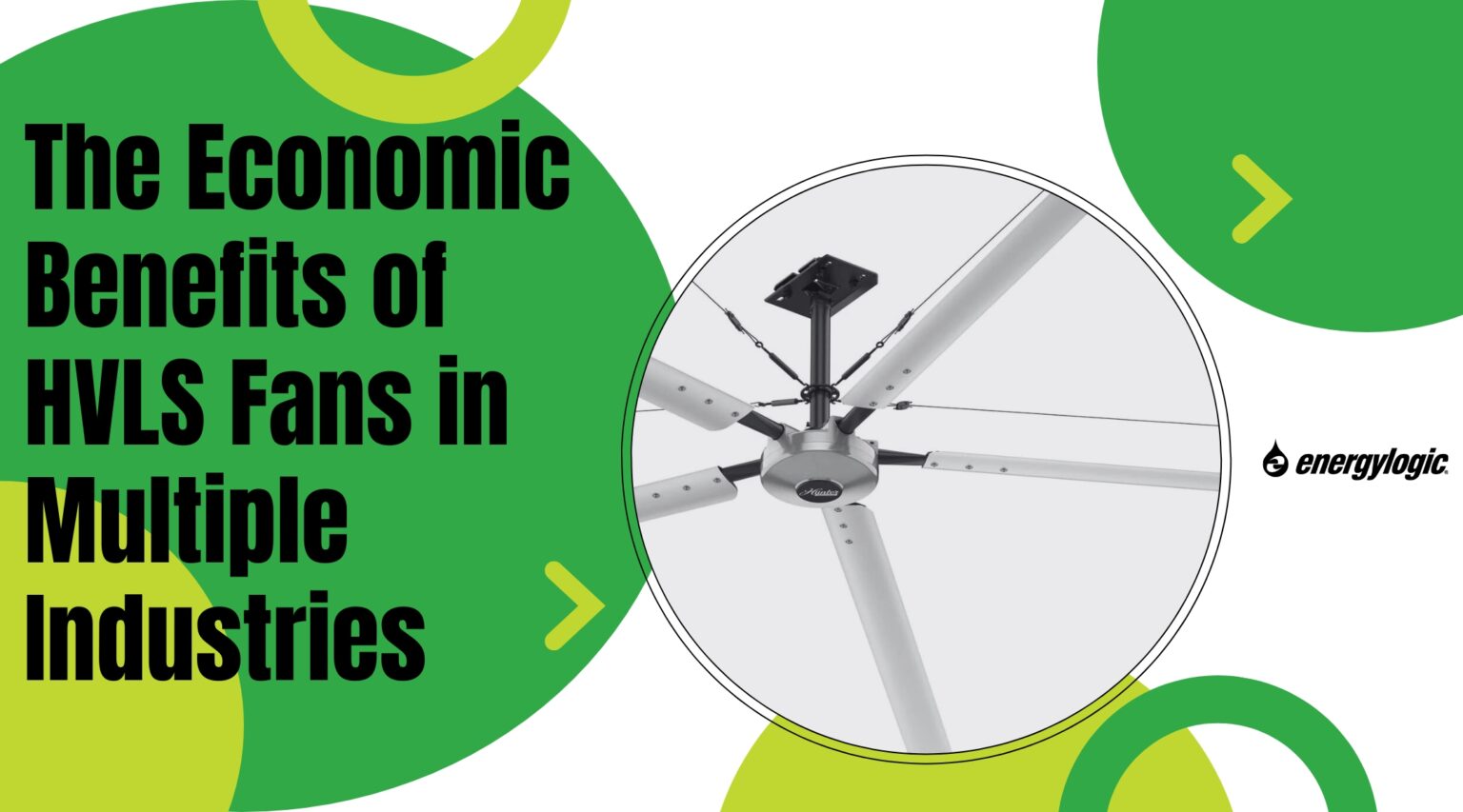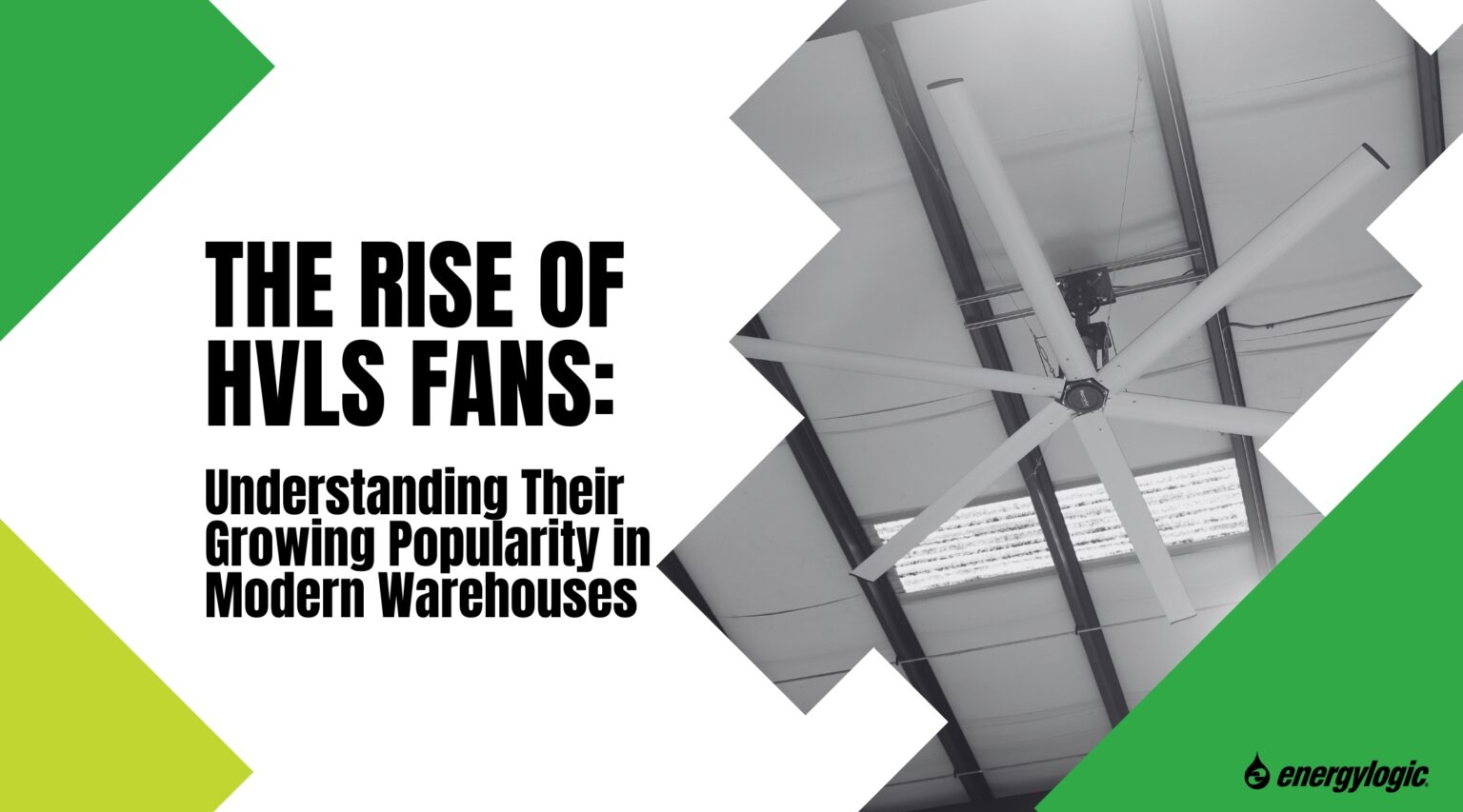Proper barn ventilation is vital for the health of all livestock animals, such as chickens, cows, and horses. Adequate airflow helps remove excess moisture, waste gasses, dust and respiratory disease organisms. As a result, animals remain comfortable and are more healthy year-round. Through these physical benefits, a barn fan can increase animal product output – meaning better production of milk and eggs. In addition, the right ventilation keeps farmworkers feeling comfortable in any weather. Unless a barn is well ventilated, animals are often better outdoors.

HVLS Barn Fans
Adequate ventilation starts with the right barn fan. For the best airflow, it is important to consider the fan’s blade shape, blade size, motor efficiency, and placement. Other specific barn fan factors should also be considered. Noise output, energy efficiency, and the number of fans needed for a space can impact the airflow and animal well-being.
An excellent fan choice for barns is an industrial HVLS fan. Industrial HVLS fans, like the ones produced by EnergyLogic, keep barns cool in the summer and warm in the winter. Their noise level is minimal so as not to scare livestock or damage hearing. In addition, these barn fans have specially designed blades to minimize stress on the motor. In turn, this can reduce energy costs by 30%.

In addition, HVLS barn fans improve air ventilation and production. Inadequate ventilation suspends bad smells, dust particles, and mold spores in the air. These irritants may trigger inflammation in an animal’s lungs, particularly young foals, opening the pathway for viruses and bacterial infections. An HVLS fan constantly replaces moist, smelly, contaminated air with fresh air. In short, HVLS horse barn fans, as well as fans used for cattle and chickens, also promote good respiratory health.
An HVLS barn fan will also improve humidity. Too much or too little moisture in a barn can harm the livestock, including poor coat insulation and dry nasal passages. These seemingly minor issues can lead to greater problems over time.
Implement Smart Barn Design
In addition to proper barn fans, barn design is vitally important to overall airflow performance. The number of windows and doors a barn has, as well as the placement of a barn, will all affect ventilation.
For example, barns with few windows have limited options for bringing in fresh air and taking out the old air. The best barn designs should incorporate multiple inlets and outlets to allow air to move through freely. If your barn doesn’t have enough windows, you can improve air circulation by leaving a door open at each end of the barn.
However, opening doors in your barn may not be enough to maintain adequate ventilation. Proper airflow also depends on which direction the wind comes from. In other words, the placement of your barn matters too. If your barn is situated east to west, the wind should also flow this way. In most cases, this provides good airflow if you have the right number of windows. However, if the wind blows from the south and you have windows on the south side, dust can blow right into an animal’s stall creating an unhealthy airflow. Therefore, natural ventilation has its limits depending on where your barn is placed relative to the prevailing winds.

Whether you have an old barn or are building a new facility, it is advised to have a professional look at the air flow. A professional can suggest the best places for windows and doors. They can also recommend where HVLS fans should be located and how many your facility would need. With the right combination of windows, doors, barn placement, and HVLS fans, a perfect ventilation system will create a healthy environment for animals.
Proper HVLS Barn Fan Size, Number and Placement
To support natural ventilation through barn design and surroundings, it is important to consider HVLS barn fan size, number, and placement. These three factors can vary depending on the building’s total air volume, shape, building material, and use.
For example, consider a 120 foot by 60 foot barn with ten horses. In general, an 8ft HVLS fan can cover approximately 30 radius feet. So, in this space, two 8 feet HVLS fans spaced 60 feet apart and 12 feet from the wall might produce the best airflow. However, a smaller barn might work more efficiently with one HVLS barn fan with a larger diameter.
The placement of fans is also crucial. In addition to needing enough space from other fans and walls, it is necessary to note ground obstructions. Large pieces of stationary equipment and other obstacles can reduce the airflow. Depending on the obstructions and number, HVLS barn fans will need to be either centered above the object or spaced between the objects.
Ultimately, because every barn design is different, it is best to consult an HVLS barn fan manufacturer and installer for the best size, number, and placement recommendations.
Custom HVLS Barn Solutions

Protect the health and well-being of your animals and staff by implementing the right HVLS barn fans, design, location, and placement. The team at EnergyLogic will create a custom HVLS barn fan solution for your unique needs. Using all these techniques will noticeably improve barn ventilation and lead to better livestock output and health. MacroAir HVLS fans from EnergyLogic for agriculture are cost-effective, efficient, reliable, and backed by the industry’s best warranty. If you want your barn to have proper ventilation and save money on your utility bills, see what EnergyLogic can do for you today.
Read the Barn Fans Ventilation Guide for more information.




